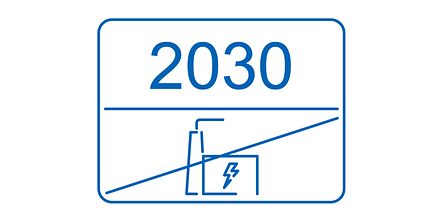(Frankfurt a. M./Berlin, 06.12.2023) With the System Stability Roadmap, which the Federal Cabinet adopted today, the state is setting the course for a secure restructuring of the energy system. Conventional power plants automatically ensure that frequency and voltage are kept within a narrow tolerance band and as constant as possible. Frequency or voltage deviations in the event of disruptions in the electricity grid can thus be compensated for in a matter of seconds. Renewable energy systems are currently unable to do this. The VDE Grid Technology/Grid Operation Forum (VDE FNN) has therefore been quick to point out and work towards the fact that precautions must be taken in good time if we want to convert our electricity supply to 100% renewable energies. The Federal Ministry for Economic Affairs and Climate Protection's (BMWK) roadmap for system stability sets out the roadmap for this, which VDE FNN welcomes.
Transferring the capabilities of large power plants to the new energy system
"The entire energy system is changing dramatically. The supply should remain as reliable as ever. As the technical regulator for the electricity grids, we are working on the necessary requirements for generation plants and consumers as well as for grid operation. Once the power plants have been shut down, the system in Germany will be dominated by renewable generation plants. Accordingly, the capabilities previously provided by large power plants will have to be taken over by new systems such as photovoltaic and wind power plants or storage systems in the future," says Dr. Joachim Kabs, Chairman of VDE FNN. "This is why our experts
have been involved in developing the BMWK roadmap from the outset."
In future, it will no longer be enough for new systems to produce, store or purchase electricity: Every new photovoltaic system, wind turbine and storage system connected to the grid must also make a contribution to system stability. The VDE FNN technical connection rules define the capabilities for this and how these can be verified.
Define requirements for grid-forming inverters
Dr. Dirk Biermann, Deputy Chairman of VDE FNN: "The new systems are connected to the system with inverters, i.e. with power electronics. The inverters must be designed in such a way that they are grid-forming. This is important in order to keep the voltage and frequency stable. One of the focal points for VDE FNN is therefore defining the technical requirements and verifications for grid-forming inverters." The generators in conventional power plants have always been grid-forming. Their flywheel masses ensure that the system reacts sufficiently slowly to faults and can return to a safe operating state. They ensure system stability as a matter of course. Renewable generation plants do not yet do this.
"If the large power plants are removed, we need to talk about how we can ensure sufficient stability in the future system. We welcome the fact that the BMWK has presented a concrete roadmap for system stability with 100 percent renewables. It is also positive that the roadmap defines work packages that must be implemented by when. VDE FNN and other stakeholders are already working intensively on implementation. From 2025 onwards, all newly connected plants in the system should have a stabilizing effect," adds Heike Kerber, Managing Director of VDE FNN.
Secure system operation: VDE FNN does pioneering work
System stability is one of three aspects of secure system operation that VDE FNN is currently pioneering:
- System balance, i.e. ensuring a balance between generation and consumption at all times
- Grid security, i.e. keeping voltage and equipment loads within the permissible limits
- System stability, i.e. the system automatically returns to a stable state when faults occur. In focus: further development of grid-forming inverters


